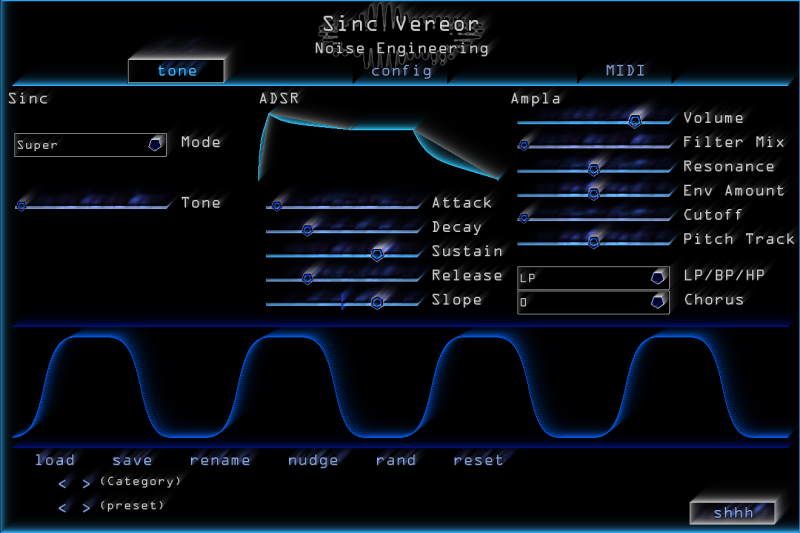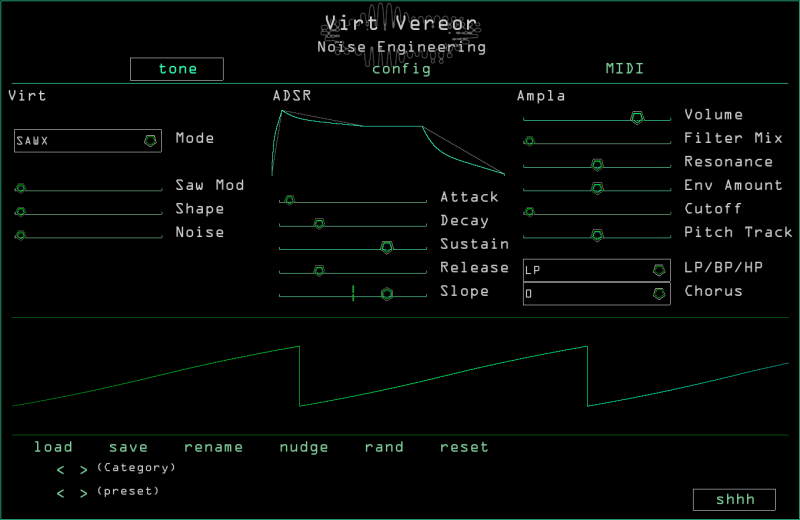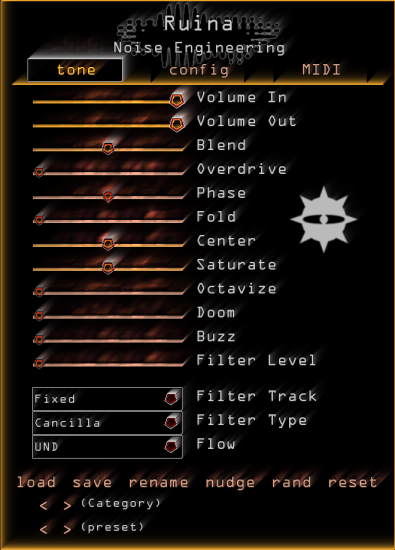Noise Engineering releases three free Plugins
Noise Engineering announces the end of the public beta and move to full release of three free plugins: synths Sinc Vereor and Virt Vereor and distortion Ruina.
Asked why the move from Eurorack to software, the Noise Engineering team said that it was inspired by several things: first, they’d been bombarded with requests for plugins from modular synth users who love the sound but needed portability or repeatability. They were also extremely aware of the barrier to entry to a modular system and really wanted to make their products more widely accessible (which is partly why this release is free, and will remain free). Finally, they have no plans to stop making modules, but a core value for this small team of six self-described nerds is to keep challenging themselves to learn new things, and making plugins fit the bill. They anticipate further plugin releases based on Eurorack favorites (including a VST3/AU release of their currently AAX-only bundle) coming soon.
Sinc Vereor

Sinc Vereor is an intuitive and powerful synthesizer loosely based on Noise Engineering’s beloved Eurorack module Sinc Iter. Sinc Vereor’s wavemorphing/wavefolding Tone control makes sound design a breeze. Blend between familiar waveforms like saw, triangle, and square. Super mode adds 6 phase-offset oscillators. Use Noise mode to generate self-similar noise for percussion, effects, and more.
Virt Vereor

Virt Vereor is a powerful synthesizer based on a unique set of synthesis algorithms. Bass is a quadrature algorithm described in Bernie Hutchins’ seminal series Electronotes. Sawx is a supersaw-inspired beast. Harm is an additive algorithm with spectral control and distortion of partials. Virt Vereor makes a tremendous amount of unique sounds with an immediate and usable interface.
Some readers will recognize the names of these algorithms, and indeed they come from Noise Engineering’s contribution to Arturia’s Microfreak V3 firmware and the upcoming Virt Iter module
Both the Sinc and Virt oscillators are paired with Vereor, Noise Engineering’s easily manipulated dynamics section using an ADSR envelope controlling a variable slope and analog-inspired multimode gate/filter. Add to that a vintage-inspired chorus and a over 1000 presets each, and these synths have something for everyone: bridge the gap between traditional subtractive sounds and modern synthesis techniques, or design innovative basses, leads, or whatever your project calls for.
Runia

Ruina is a creative stereo distortion plugin built on digital distortion algorithms: no emulations here. Intuitive and fully automatable controls make it easy to get a gentle, nuanced color, to obliviate a signal, or to dial in anything in between. Don’t feel like tweaking the parameters? Ruina comes with over 500 presets to fit any need, a Random button to generate new sounds, and a Nudge option to just give the parameters the tiniest bump.
Ruina has a wavefolder, a multiband saturator, a chaotic suboctave generator, octavizer, and phase shifter. It also features a notch or bandpass filter with adjustable tracking, and a control to set the order of the distortions in the signal flow to further customize your sound. Last but not least, Overdrive adds up to 128x gain for maximal destruction.
Run any sound through Ruina for warm, lush distortion, or crank the sliders to unleash complete ruin. With seven distortion types, it’s easy to turn your sounds into something singular with Ruina.
All three plugins are free to download: just make an account at the Noise Engineering Customer Portal and download the installer from the Plugins tab. And while they will remain free, the NE team has big plans to keep developing these. They have a substantial roadmap for future features, some of which were suggestions from the beta users, including introducing extensive internal modulation, more advanced randomization, MIDI learn, MPE support, and more.
Notable features:
- AAX, AU, VST3
- 64-bit Intel + M1
- Mac and Windows
- Intuitive interfaces to easily and quickly manipulate sound
- Use the Random button to generate new patches in one click
- Easy to automate, user-friendly controls. No prior synthesis experience needed, but synth enthusiasts will also be inspired by the simple-yet-powerful interface
- Fully MIDI-mappable
- Tons of presets included
- Three unique synthesis algorithms inspired by little-known synthesis techniques (quadrature, supersaw beast, and additive)
- Huge number of distortion possibilities with wavefolding, octavizing, multiband saturation, suboctave generation, phase shifting, and overdrive